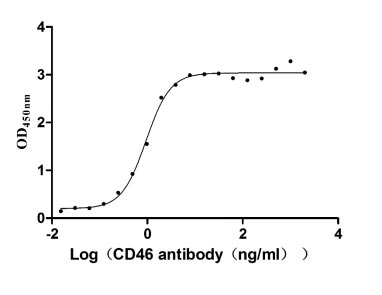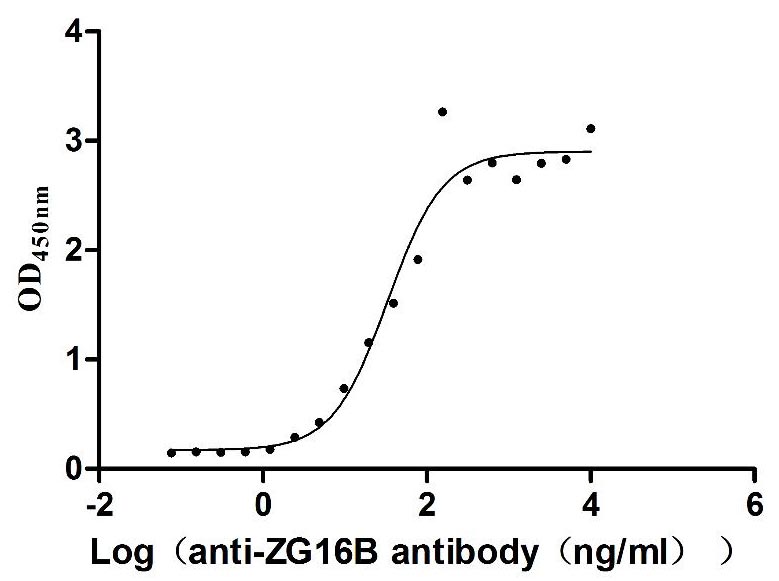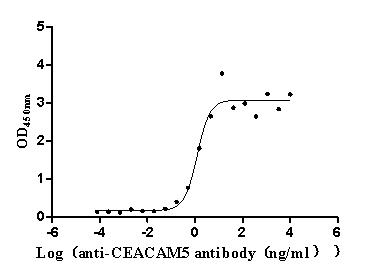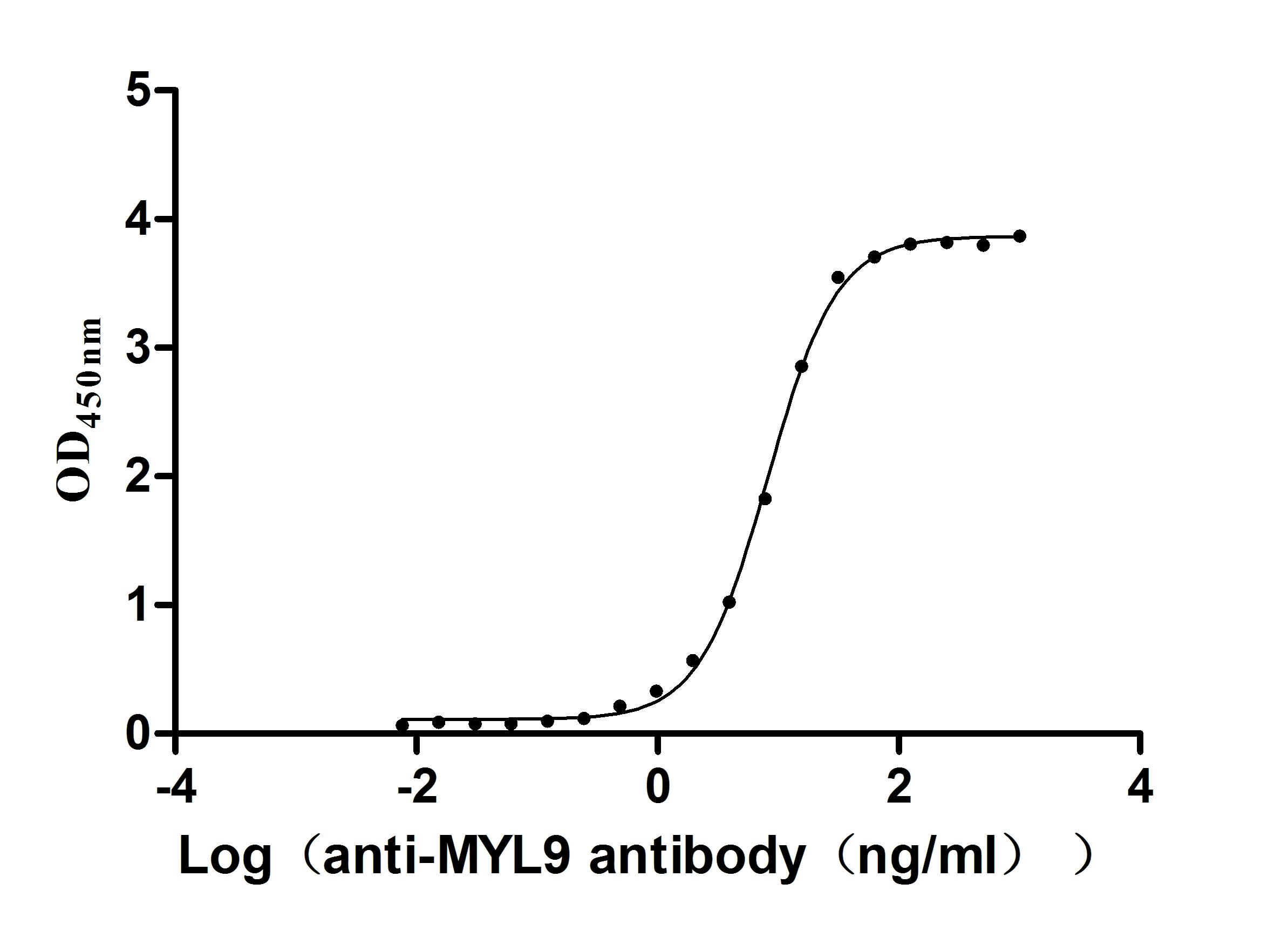Recombinant Human Transient receptor potential cation channel subfamily M member 5 (TRPM5), partial
-
中文名称:人TRPM5重组蛋白
-
货号:CSB-YP873712HU
-
规格:
-
来源:Yeast
-
其他:
-
中文名称:人TRPM5重组蛋白
-
货号:CSB-EP873712HU
-
规格:
-
来源:E.coli
-
其他:
-
中文名称:人TRPM5重组蛋白
-
货号:CSB-EP873712HU-B
-
规格:
-
来源:E.coli
-
共轭:Avi-tag Biotinylated
E. coli biotin ligase (BirA) is highly specific in covalently attaching biotin to the 15 amino acid AviTag peptide. This recombinant protein was biotinylated in vivo by AviTag-BirA technology, which method is BriA catalyzes amide linkage between the biotin and the specific lysine of the AviTag.
-
其他:
-
中文名称:人TRPM5重组蛋白
-
货号:CSB-BP873712HU
-
规格:
-
来源:Baculovirus
-
其他:
-
中文名称:人TRPM5重组蛋白
-
货号:CSB-MP873712HU
-
规格:
-
来源:Mammalian cell
-
其他:
产品详情
-
纯度:>85% (SDS-PAGE)
-
基因名:TRPM5
-
Uniprot No.:
-
别名:9430099A16Rik; Long transient receptor potential channel 5; LTrpC-5; LTrpC5; MLSN1 and TRP related gene 1; MLSN1 and TRP related gene 1 protein; MLSN1 and TRP-related; MLSN1- and TRP-related gene 1 protein; MTR1; Novel protein similar to vertebrate transient receptor potential cation channel, subfamily M, member 5; Transient receptor potential cation channel subfamily M member 5; Transient receptor potential cation channel, subfamily M, member 5; Trpm5; TRPM5 transient receptor potential cation channel, subfamily M, member 5; TRPM5_HUMAN
-
种属:Homo sapiens (Human)
-
蛋白长度:Partial
-
蛋白标签:Tag type will be determined during the manufacturing process.
The tag type will be determined during production process. If you have specified tag type, please tell us and we will develop the specified tag preferentially. -
产品提供形式:Lyophilized powder
Note: We will preferentially ship the format that we have in stock, however, if you have any special requirement for the format, please remark your requirement when placing the order, we will prepare according to your demand. -
复溶:We recommend that this vial be briefly centrifuged prior to opening to bring the contents to the bottom. Please reconstitute protein in deionized sterile water to a concentration of 0.1-1.0 mg/mL.We recommend to add 5-50% of glycerol (final concentration) and aliquot for long-term storage at -20℃/-80℃. Our default final concentration of glycerol is 50%. Customers could use it as reference.
-
储存条件:Store at -20°C/-80°C upon receipt, aliquoting is necessary for mutiple use. Avoid repeated freeze-thaw cycles.
-
保质期:The shelf life is related to many factors, storage state, buffer ingredients, storage temperature and the stability of the protein itself.
Generally, the shelf life of liquid form is 6 months at -20°C/-80°C. The shelf life of lyophilized form is 12 months at -20°C/-80°C. -
货期:Delivery time may differ from different purchasing way or location, please kindly consult your local distributors for specific delivery time.Note: All of our proteins are default shipped with normal blue ice packs, if you request to ship with dry ice, please communicate with us in advance and extra fees will be charged.
-
注意事项:Repeated freezing and thawing is not recommended. Store working aliquots at 4°C for up to one week.
-
Datasheet :Please contact us to get it.
相关产品
靶点详情
-
功能:Voltage-modulated Ca(2+)-activated, monovalent cation channel (VCAM) that mediates a transient membrane depolarization and plays a central role in taste transduction. Monovalent-specific, non-selective cation channel that mediates the transport of Na(+), K(+) and Cs(+) ions equally well. Activated directly by increases in intracellular Ca(2+), but is impermeable to it. Gating is voltage-dependent and displays rapid activation and deactivation kinetics upon channel stimulation even during sustained elevations in Ca(2+). Also activated by a fast i...显示更多
-
基因功能参考文献:
- genetic association studies in populations in Northern Europe, Maghreb, and Sri Lanka: Data suggest that SNPs in TAS2R50 (rs1376251), TRPM5 (rs800345), and TAS2R16 (rs860170) are associated with cultural food preferences; TAS2R16 (rs860170) strongly differentiates populations and is associated to salicin bitterness perception. (TAS2R = taste receptor type 2) PMID: 28366770
- Our results suggest roles of TRPM3 and TRPM5 gene variants in the susceptibility to or clinical expression of Systemic sclerosis PMID: 26546534
- The PKC-dependent effect of GLP-1 on membrane potential and electrical activity was mediated by activation of Na(+)-permeable TRPM4 and TRPM5 channels by mobilization of intracellular Ca(2+) from thapsigargin-sensitive Ca(2+) stores PMID: 26571400
- In a Turkish population, genetic polymorphism in TRPM5 genes modify individual susceptibility to metabolic syndrome. PMID: 25967713
- TRPM5-mediated Na(+) entry to promote Ca(2+) uptake via an NCX to trigger MUC5AC secretion PMID: 23741618
- TrpM5 expression was similar throughout the olfactory glomeruli. PMID: 24288162
- The TRPM5 gene rs34551253 (Ala456Thr) polymorphism may be associated with increased risk of developing primary open angle glaucoma in the Turkish population. PMID: 24019741
- AZIN1 rs2679757 and TRPM5 rs886277 are associated with the risk of HBV-related liver cirrhosis in Chinese. PMID: 23844940
- extracellular Zn(2+) inhibits TRPM5 channels, and the residues in the outer pore loop of TRPM5 are critically involved in the inhibition. PMID: 23884414
- common TRPM5 variants are likely to be associated with prediabetic phenotypes; and this may in turn contribute to the development of type 2 diabetes mellitus PMID: 21489577
- results suggest TRPM5 may play a role in upregulating endogenous expression of TRPA1, that TRPA1 activation may be an additional trigger for co-expressed calcium-dependent ion channels such as TRPM5, and that TRPM5 may amplify responses to TRPA1 ligands PMID: 21133676
- TRPM5 gene is imprinted, with preferential expression from the paternal allele. PMID: 10607831
- TRPM5 is a transient Ca2+-activated cation channel responding to rapid changes in [Ca2+]i PMID: 14634208
- regulation of TRPM5 by Ca2+ mediates sensory activation in the taste system PMID: 14657398
- data show that extracellular acidification acts through specific residues on transient receptor potential cation channel, subfamily M(TRPM5) to block conduction through two distinct but related mechanisms PMID: 15731110
- understanding the structural basis for TRPM5 function will ultimately allow the design of pharmaceuticals to enhance or interfere with taste sensations--{REVIEW} PMID: 17217064
收起更多
-
亚细胞定位:Cell membrane; Multi-pass membrane protein.
-
蛋白家族:Transient receptor (TC 1.A.4) family, LTrpC subfamily, TRPM5 sub-subfamily
-
组织特异性:Strongly expressed in fetal brain, liver and kidney, and in adult prostate, testis, ovary, colon and peripheral blood leukocytes. Also expressed in a large proportion of Wilms' tumors and rhabdomyosarcomas. In monochromosomal cell lines shows exclusive pa
-
数据库链接:


















